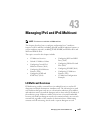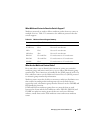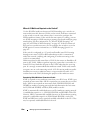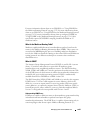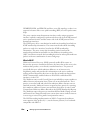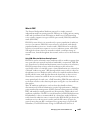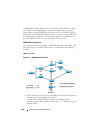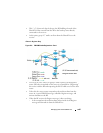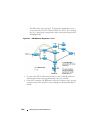
Managing IPv4 and IPv6 Multicast 1339
What Multicast Protocols Does the Switch Support?
Multicast protocols are used to deliver multicast packets from one source to
multiple receivers. Table 43-1 summarizes the multicast protocols that the
switch supports.
What Are the Multicast Protocol Roles?
Hosts must have a way to identify their interest in joining any particular
multicast group, and routers must have a way to collect and maintain group
memberships. These functions are handled by the IGMP protocol in IPv4. In
IPv6, multicast routers use the Multicast Listener Discover (MLD) protocol
to maintain group membership information.
Multicast routers must also be able to construct a multicast distribution tree
that enables forwarding multicast datagrams only on the links that are
required to reach a destination group member. Protocols such as DVMRP, and
PIM handle this function.
IGMP and MLD are multicast group discovery protocols that are used
between the clients and the local multicast router. PIM-SM, PIM-DM, and
DVMRP are multicast routing protocols that are used across different
subnets, usually between the local multicast router and remote multicast
router.
Table 43-1. Multicast Protocol Support Summary
Protocol IPv4 or IPv6 For Communication Between
IGMP IPv4 Host-to-L3 switch/router
IGMP Proxy IPv4 Host-to-L3 switch/router
MLD IPv6 Host-to-L3 switch/router
MLD Proxy IPv6 Host-to-L3 switch/router
PIM-SM IPv4 and IPv6 L3-switch/router-to-L3 switch/router
PIM-DM IPv4 and IPv6 L3-switch/router-to-L3 switch/router
DVMRP IPv4 L3-switch/router-to-L3 switch/router









